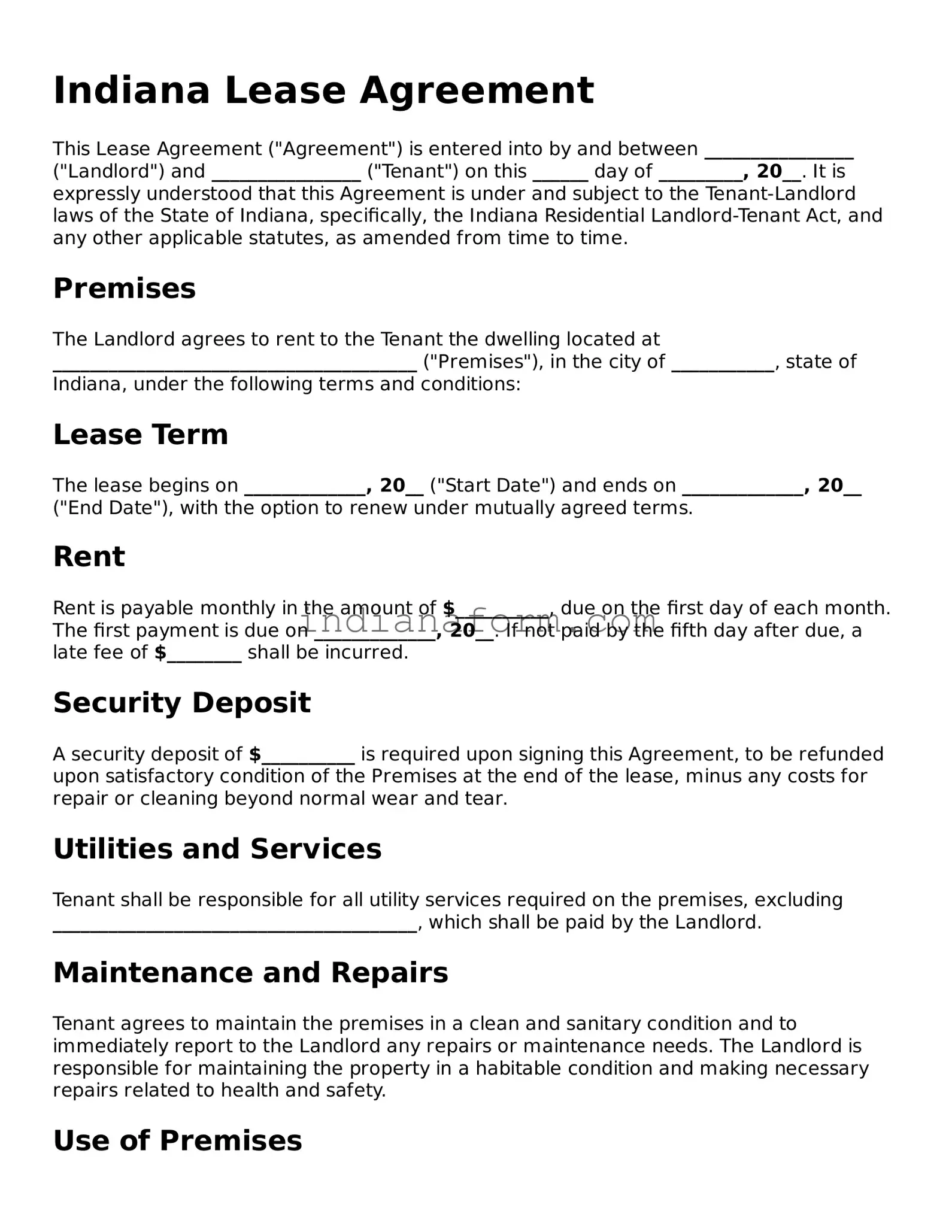Indiana Lease Agreement
This Lease Agreement ("Agreement") is entered into by and between ________________ ("Landlord") and ________________ ("Tenant") on this ______ day of _________, 20__. It is expressly understood that this Agreement is under and subject to the Tenant-Landlord laws of the State of Indiana, specifically, the Indiana Residential Landlord-Tenant Act, and any other applicable statutes, as amended from time to time.
Premises
The Landlord agrees to rent to the Tenant the dwelling located at _______________________________________ ("Premises"), in the city of ___________, state of Indiana, under the following terms and conditions:
Lease Term
The lease begins on _____________, 20__ ("Start Date") and ends on _____________, 20__ ("End Date"), with the option to renew under mutually agreed terms.
Rent
Rent is payable monthly in the amount of $__________, due on the first day of each month. The first payment is due on _____________, 20__. If not paid by the fifth day after due, a late fee of $________ shall be incurred.
Security Deposit
A security deposit of $__________ is required upon signing this Agreement, to be refunded upon satisfactory condition of the Premises at the end of the lease, minus any costs for repair or cleaning beyond normal wear and tear.
Utilities and Services
Tenant shall be responsible for all utility services required on the premises, excluding _______________________________________, which shall be paid by the Landlord.
Maintenance and Repairs
Tenant agrees to maintain the premises in a clean and sanitary condition and to immediately report to the Landlord any repairs or maintenance needs. The Landlord is responsible for maintaining the property in a habitable condition and making necessary repairs related to health and safety.
Use of Premises
The Premises shall be used exclusively for residential purposes by the Tenant and __________ immediate family members. The Tenant agrees not to engage in any activity that is a nuisance to neighbors or that violates city, state, or federal laws.
Alterations and Improvements
No alterations, improvements, or modifications to the Premises are allowed without prior written consent from the Landlord. All approved modifications shall become the property of the Landlord upon the termination of this Agreement.
Subletting
Subletting or assignment of this Lease is prohibited without the Landlord's prior written consent.
Pet Policy
Pets are _______ permitted on the Premises under the following conditions: _________________________________________________________.
Governing Law
This Agreement shall be governed by and construed in accordance with the laws of the State of Indiana. Any disputes arising under this Agreement shall be submitted to binding arbitration in the county of ___________, Indiana.
Signatures
This Agreement, having been read and understood by both the Landlord and Tenant, is hereby signed on the _____ day of ___________, 20__, entering into full force and effect as provided herein.
Landlord's Signature: ___________________________________
Tenant's Signature: ___________________________________
